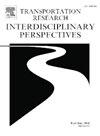Contested logistics: Resilience of strategic highways and railways
IF 3.9
Q2 TRANSPORTATION
Transportation Research Interdisciplinary Perspectives
Pub Date : 2025-07-01
DOI:10.1016/j.trip.2025.101507
引用次数: 0
Abstract
Military logistics rely heavily on public infrastructure, such as highways and railways, to transport troops, equipment, and supplies, linking critical installations through the Department of Defense’s Strategic Highway Network and Strategic Rail Corridor Network. However, these networks are vulnerable to disruptions that can jeopardize operational readiness, particularly in contested environments where adversaries employ non-traditional threats to disrupt logistics, even within the homeland. This paper presents a contested logistics model that utilizes network science and Geographic Information System (GIS) to evaluate the robustness and resilience of strategic transportation networks under various disruption scenarios. By integrating GIS data to model logistics networks, simulating disruptions, and quantifying their impacts, we identified vulnerabilities in US power projection routes and assessed the resilience and robustness of highways and railways. Our findings reveal that highways are more resilient than railways, with greater capacity to absorb targeted disruptions.. These findings underscore the importance of prioritizing investments in highway infrastructure and reinforcing vulnerable road and rail segments, particularly in high-risk regions, to enhance the resilience of military logistics and maintain operational effectiveness in contested conditions.
竞争物流:战略公路和铁路的弹性
军事后勤严重依赖公共基础设施,如高速公路和铁路,通过国防部的战略公路网和战略铁路走廊网络连接关键设施来运输部队、装备和物资。然而,这些网络很容易受到破坏,可能危及作战准备,特别是在竞争环境中,对手使用非传统威胁来破坏后勤,甚至在国内。本文提出了一个竞争物流模型,该模型利用网络科学和地理信息系统(GIS)来评估战略运输网络在各种中断情况下的稳健性和弹性。通过整合GIS数据来模拟物流网络,模拟中断,并量化其影响,我们确定了美国力量投射路线的脆弱性,并评估了公路和铁路的弹性和稳健性。我们的研究结果表明,高速公路比铁路更具弹性,有更大的能力吸收有针对性的中断。这些发现强调了优先投资公路基础设施和加强脆弱的公路和铁路路段的重要性,特别是在高风险地区,以提高军事后勤的弹性,并在有争议的条件下保持作战效率。
本文章由计算机程序翻译,如有差异,请以英文原文为准。
求助全文
约1分钟内获得全文
求助全文
来源期刊

Transportation Research Interdisciplinary Perspectives
Engineering-Automotive Engineering
CiteScore
12.90
自引率
0.00%
发文量
185
审稿时长
22 weeks
 求助内容:
求助内容: 应助结果提醒方式:
应助结果提醒方式:


